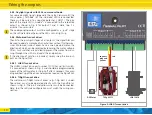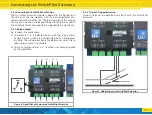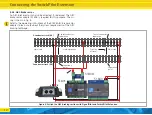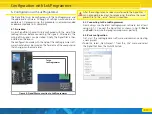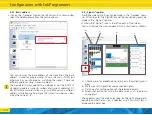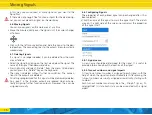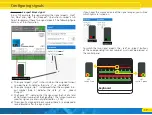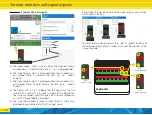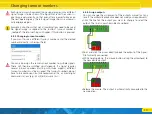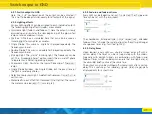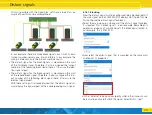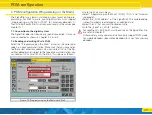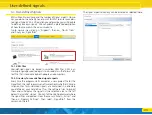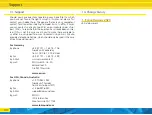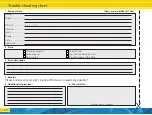
24
6.13.2. Signal aspects and the assignment to turnout numbers
As already shown in the examples in chapter 6.8.2., the turnout
numbers must correspond to the associated signal aspects. Let’s
take another look at an example:
In this configuration, the block signal can be switched with the
turnout number 5. „RED” (1) turns on Hp0, „GREEN” (1) turns
on Hp1:
On the virtual cab, these would be the buttons „5 A” for „Hp0”
and „5 B” for Hp1:
The exit signal requires turnout numbers seven and eight. „RED”
(7) turns on Hp0, „GREEN” (7) turns on Hp1, „GREEN” (8) turns
on the yellow light for Hp2.
On the virtual cab, these would be the buttons „7 A” for „Hp0”,
„7 B” for Hp1, „8 B” for the yellow light for Hp2.
6.14. Distant signals at the same mast of a main signal
A particular challenge are combinations of distant signals and
main signals on a common mast in block control operation. Here,
the distant signal displays the aspect of the following main signal.
For this to work, two conditions must be met:
• The turnout numbers of the distant signal must be the same as
those of the corresponding (following) main signal.
• The distant signal must “know” the turnout number (address) of
the main signal on whose mast it is mounted, because it must be
switched off (blanked) if the main signal on the same mast displays
Hp0 or Hp00.
To understand Signal aspects
Distant signals

